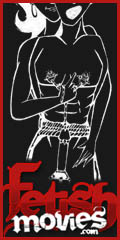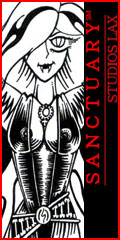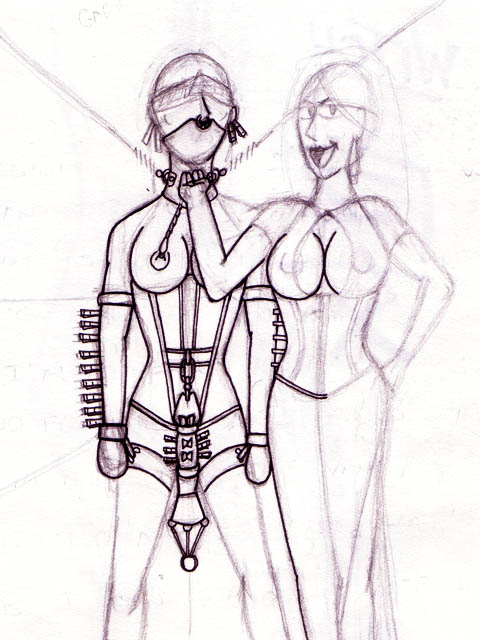
Art doesn’t have to be fast. Some pieces can take ages to complete. This one is still in progress weeks later.
Sometimes the question comes up, what’s the difference between an artist and an illustrator? Is it ego? Is it the money? Is it a matter of skill?
Certainly this criteria can be taken into account, but it can also be very subjective. Graphic designers, illustrators, and fine artists are all known for big egos. Fine artists can make much more than illustrators, and I’ve seen illustrators that can whip fine artists in media ranging from watercolors to digital art. Even a signature is not exclusive. Many illustrators are credited for their work, and the design studio Tharpe Did It is famous for hiding their mark in their work.
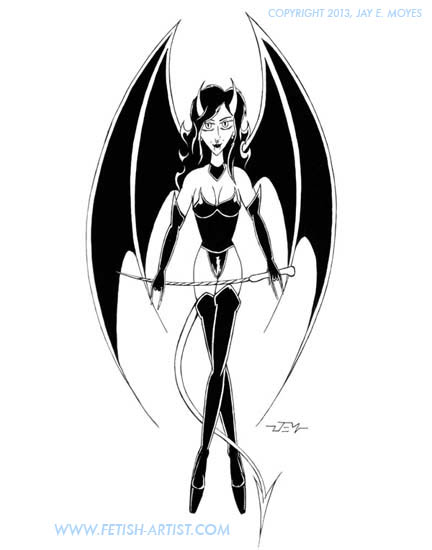
This illustration started as a simple commission, requested one night at a bar. She liked the batwing and boot themes I had. The piece is very simple and pushes few boundaries, but visually, it works.
Well, what makes the difference? Illustration is not only art for hire, but it usually has a deadline and a purpose. Illustrators often do not have the luxury of choosing their subject. One of the reasons I’ve had trouble selling fetish art in Los Angeles is simple. There’s an abundance of working artists available who have no trouble drawing the genre, whereas in other regions, I was one of the few openly willing to take the gig.
There are very few rules for illustrators. They’re called hired guns for a reason. Get the job done. Get the job done on time. Can’t figure the pose? Get a photo and trace it. Is the media mixed? Is the image cliche? Nobody cares! While we want a piece to emotionally move the viewer, most clients merely care that it looks OK and it fills the page. Editorial illustrations are intended to stimulate the reader, but the deadline is a greater priority. If the piece doesn’t hit the mark exactly, there’s always tomorrow. Many editorial art pieces don’t make it because of deadlines, killed stories, or lack of space.
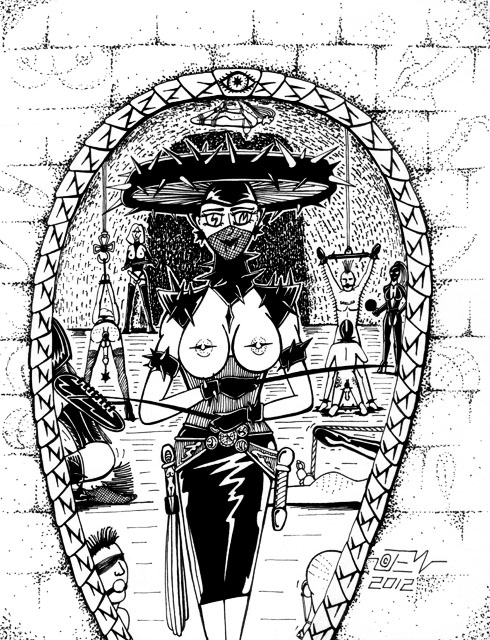
This piece started as an experiment with fetish headwear, and pushed limits further by adding figures in the background and taking risks with the stippled images in the brickwork. I actually don’t consider this fetish art piece a success, not because of the hat or kinky people in back, but because Queen Thorny’s head just came out so awkward. Nobody seems to have noticed.
Artists are often called upon to push boundaries. This means experimenting. Rules are often challenged and go out the window in fine art, but there are often consequences for doing so. Many times, we fail, or are simply unrecognized. Others succeed. Some of the most famous fine art pieces are experimental. Nude Descending a Staircase by Marcel Duchamp is legendary for pushing boundaries, even for cubism. Pablo Picasso was a fantastically talented fine artist with realistic attention to detail. However Picasso’s Les Demoiselles d’Avignon will always be known as not only his most revolutionary work, it is typically the threshold of his legend as a cubist and abstract artist. Jackson Pollock was a decent artist, but it would be his experiments with drip techniques that made him a legend.
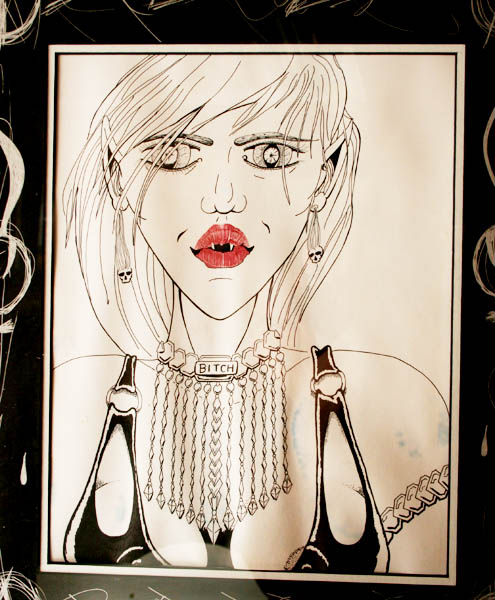
This mysterious experimental piece was started by some strange drunk woman kissing my sketchpad. Not only has the piece changed from circumstances such as being water damaged during a heavy rain storm on the location, but I experimented by drawing on the matte and even painted the frame red.
Fine art also means shrugging off cliche. I’ve lost count of the boots, corsets, hoods, and flames I’ve drawn. Many times, I just love drawing them, and if it works, it works. However, this week as I’m sitting on the couch drawing, I find myself saying things like, I’ve drawn too many futa submissives lately. Do I have to use a corset on this Dominatrix? I don’t think I’ve ever drawn a clothespin on a clitoris, but I know it can be intensely hot for the subbie.
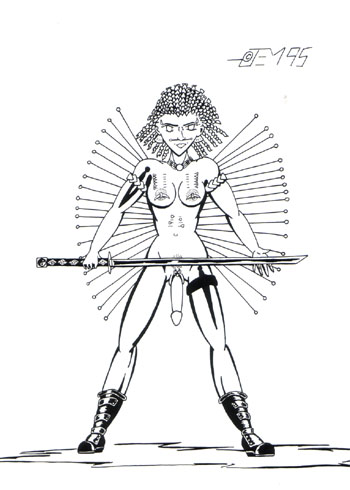
One of my first art pieces featuring an African American woman. What pushed the boundary wasn’t the ethnicity, but the body piercing and use of a double ended dildo to assert authority.
Illustrators don’t have the luxury to push boundaries in content, unless demanded by the client. More importantly, they don’t have time to experiment, because experiments fail. As an illustrator, you do your experiments before doing the finished piece for a client. This is why so much illustration, stock art, and cartooning doesn’t get taken seriously.
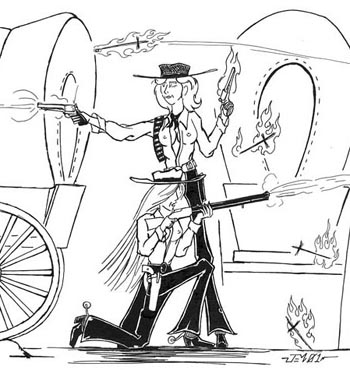
This piece was created for an editorial themed Circle The Wagons in AVN magazine. It took about two hours to complete at the most. I knew what I needed to draw, and how they were going to look. There was less need to experiment, and more emphasis on just cranking it out ASAP to meet deadline.
Can fine art be used as illustration? Fuck yeah! Sure. I’ve known of plenty of artists that have had their work cribbed for pay as book covers and album covers. Rights to Michael Manning’s work were frequently sold for book covers by Circlet Press. Axel Rose exploited his fine art appreciation by licensing work from Robert Williams and Mark Kostabi on Guns and Roses album covers.

Illustration can also be adopted as fine art as well. Movie posters, pulp novels, and advertising often make it into our homes as appreciated fine art or pop art pieces.
With that said. I’ve got to head back to the grind and get some work done.




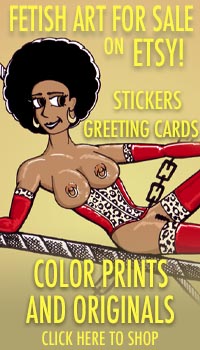

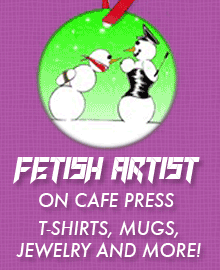
 Dungeon Net
Dungeon Net Hogspy
Hogspy